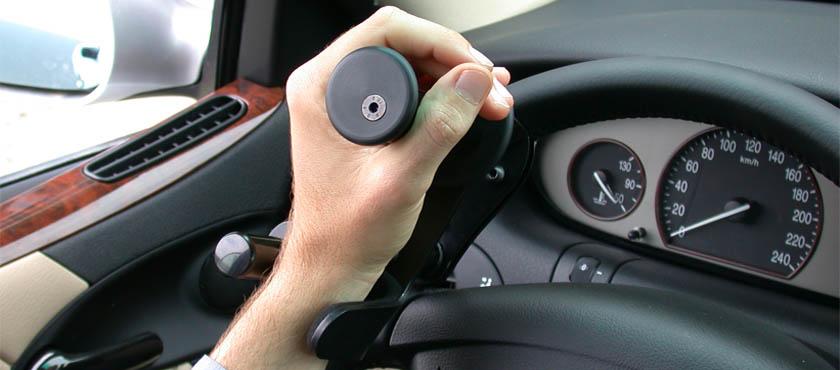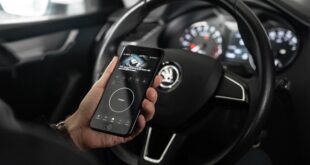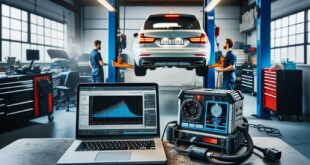Barrier-free driving (Vehicle modifications for people with disabilities) has no longer been a distant dream for decades, but thanks to modern modifications it has become a reality for people with disabilities. Customizations range from small changes to comprehensive ones Conversions, which enable the vehicle to be operated safely and comfortably. One of the most important adjustments are Hand controls for gas and brake, which enable people with limited leg function to control functions with their hands instead of their feet. The components are attached to the steering wheel or a nearby location and are designed to be easy to reach and use. And are for wheelchair users Wheelchair ramps and lifting systems (wheelchair loading) essential.
Vehicle modifications in the event of a disability
They can be operated automatically or manually and must be dimensioned to safely support the wheelchair and user. The dimensions of the ramp or lifting system obviously vary depending on the vehicle type and needs.
Another important feature on the topic of vehicle modifications in the event of a disability is swivel seats, which make it easier to move from the wheelchair to the driver's seat and back. Depending on the type, they can be operated electrically or manually and should allow for stable and safe rotation. And there are special ones for drivers with limited hand or arm strength power steering and Brake booster a big help. They reduce the effort required to a minimum and thus increase driving safety and comfort for the user. We continue with digital tools like one Voice control and adapted controls on the steering wheel. They allow people with different types of disabilities to operate functions such as indicators, windshield wipers or lighting completely without traditional handles.
The time required varies depending on the conversion!
Some customizations, such as handheld controls, can be installed relatively inexpensively and within a few days, while major modifications, such as installing a Wheelchair lifting system, more expensive and time consuming. It is of course important to emphasize that all modifications should comply with applicable safety standards and be carried out by qualified professionals. In many countries there are even special ones funding programs and financial support to cover the costs of such adjustments. Special modifications for people with disabilities not only allow greater independence, but also improve quality of life. They are a crucial step towards a more inclusive and barrier-free society.
Common vehicle modifications for a disability:
- Hand-held control devices for gas and brake: Allows you to steer with your hands instead of your feet.
- steering wheel knob: Makes steering easier with one hand.
- Rotating driver's seat: Makes it easier to switch between the wheelchair and the driver's seat.
- Electronic vehicle control: Customizable controls for people with limited hand function.
- Automatic door openers and ramps: Facilitate access for wheelchair users.
- Manual shift conversion to automatic: For drivers with limited leg function.
- Wheelchair anchoring systems: Ensure safety while driving.
- Voice control systems: Allow you to control various functions without manual operation.
- Raised pedals: Adapt the vehicle to people of short stature.
- Adjustable pedal modules: For individual adjustment to leg length and strength.
- Power steering and brake booster: Reduce the amount of effort required.
- Special mirror: For drivers with limited field of vision.
- Vibration alarms and visual warning systems: For hearing impaired drivers.
- Navigation systems with voice output: Support visually impaired passengers.
- Lifts for wheelchairs: Enable easy entry and exit for wheelchair users.
- Controls on the steering wheel: Adjustments for indicators, headlights and wipers directly on the steering wheel.
- Extended Reversing Cameras and Parking assistants: For drivers with limited mobility.
- Adjustable and supportive seating systems: Provide extra support and comfort.
- Foot steering system: For drivers with no or limited hand function.
- Touchscreen control systems: Make it easier to operate vehicle functions.
- Specially adapted seat belts: For added comfort and safety.
- Remote controllable vehicle functions: Such as door lock and air conditioning.
- Widened doors and adapted interiors: For more freedom of movement in the vehicle.
- Voice-based GPS systems: For easier navigation without visual aids.
- Adapted controls for heating and air conditioning: For easier accessibility.
- Reinforced vehicle structure: For added stability during heavy adjustments.
- Individual adjustment of the instrument panel: For better accessibility and visibility.
- Joystick controls: Alternative to steering wheel and pedals for complex disabilities.
The following note is essential: For safety reasons, tuningblog recommends all repair, inspection and maintenance work exclusively to be carried out in a specialist workshop! Although our information is summarized to the best of our knowledge and belief, we cannot assume any liability for the content. All information is therefore "without guarantee".
That wasn't it yet!
In our Auto Repair Category you will find advice and instructions on common vehicle defects, repairs and the installation of accessories/tuning parts.
thematically relevant posts
|
Everything possible with the OBD scanner? Vehicle diagnostics made easy! |
Calibration of driver assistance systems: short practical guide! |
 tuningblog.eu Your magazine about tuning the car
tuningblog.eu Your magazine about tuning the car



